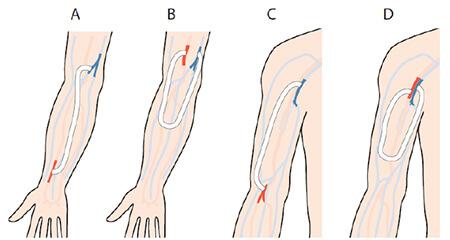Hemodialysis is the most common way to treat advanced kidney failure. In hemodialysis, a machine filters wastes, salts and fluid from your blood when your kidneys are no longer healthy enough to do this work adequately.
The procedure can help you carry on an active life despite failing kidneys. For hemodialysis, you are connected to a filter (dialyzer) by tubes attached to your blood vessels.
Your blood is slowly pumped from your body into the dialyzer, it is filtered and then pumped back into your body.

Hemodialysis may improve your quality of life and increase your life expectancy, however it does not reverse chronic kidney failure.
Hemodialysis treatment usually lasts about four hours and is done three times per week. There are different types of hemodialysis that can suit your lifestyle and underlying medical conditions:
- In-center hemodialysis: Get treatments at a dialysis center from caring kidney care professionals and interact with other patients.
- Home hemodialysis: Perform hemodialysis in the privacy of your own home, with a trained care partner to help you with treatments.
- Nocturnal hemodialysis in-center or at home: Turn sleep time into dialysis treatment time. Hemodialysis is done 3 to 7 nights a week. Each session is done overnight (about 6 to 8 hours).
Before dialysis treatment can begin, your vascular surgeon will need to create a site where the blood can flow in and out of your body during the dialysis sessions.
This is called a dialysis access. Your vascular surgeon will perform an extensive physical exam to identify satisfactory vessels to construct the fistula or implant a graft.
He or she will then perform (or request) an ultrasound study for “vein mapping” of your arms or even legs looking to identify the best available (if any) vein for fistula planning.
The typical site to get your first access is the wrist or forearm of your non dominant hand.
If these sites are not suitable or have already been used, then your vascular surgeon may choose to use the wrist or forearm of the dominant hand before eventually using the upper arm or even your groin’s veins.



